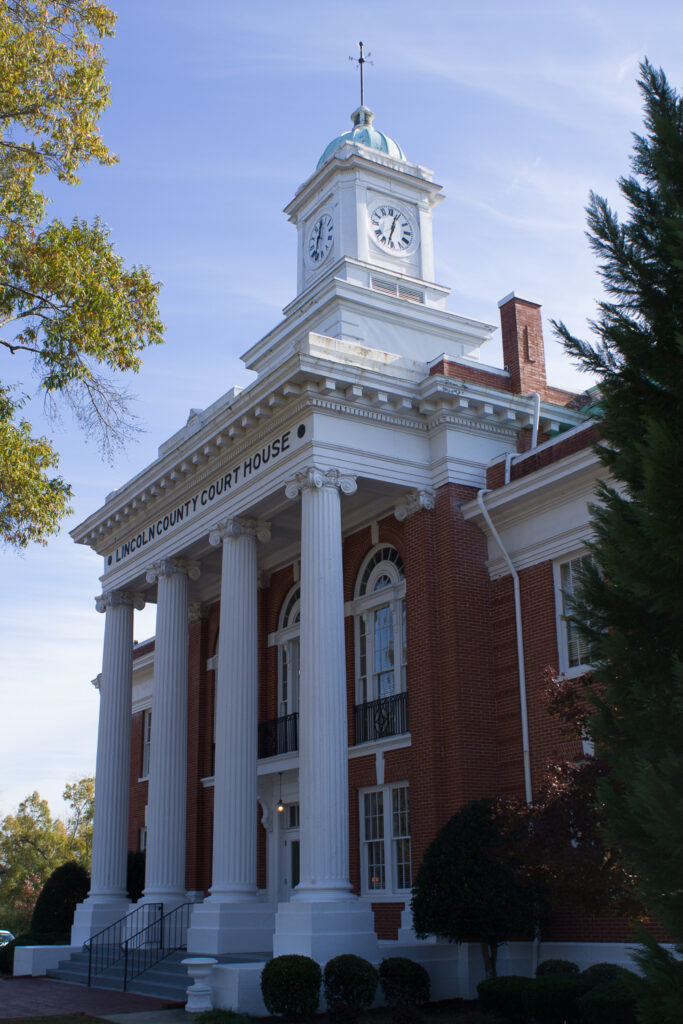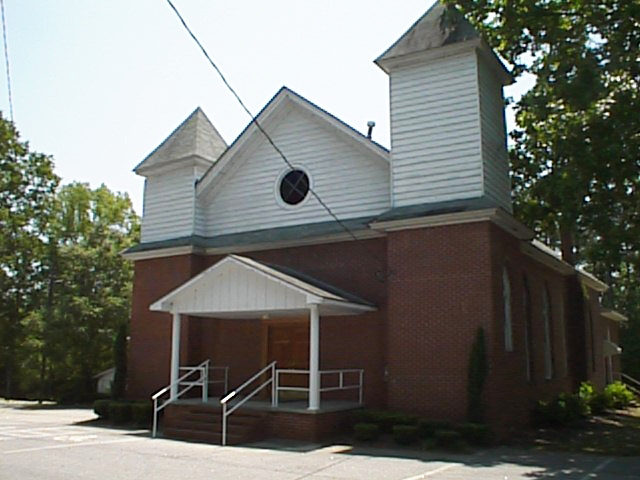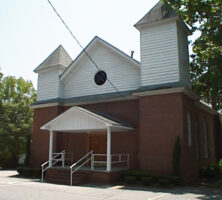Georgia’s twenty-fourth county, Lincoln County comprises 211 square miles and was created in 1796 in the northeast part of the state from Wilkes County. The county is named for Benjamin Lincoln, a major general of the Continental Army who played a key role in the defeat of the British at Yorktown during the American Revolution (1775-83).
The area’s first inhabitants were Creek and Cherokee Indians, who ceded the land to Georgia in 1773. The first white settlers came from the Carolinas, enticed by land grants available for “a reasonable sum.”
The county seat is Lincolnton, incorporated in 1817. When the county was created in 1796, the state legislature directed that court sessions be held in the house of Joseph Stovall until a county seat was selected. Lincolnton was named county seat in 1800, and a stone courthouse was built soon thereafter. It was replaced in 1874 with a two-story courthouse, which was torn down in 1916. The current courthouse, which is listed on the National Register of Historic Places, has been in use since 1915.
The American Revolution took place two decades before Lincoln County’s creation, but there were white settlers in the area at the time. Many local families fled to South Carolina during the war. Some of them returned under the leadership of colonels Elijah Clarke and John Dooly, and on February 14, 1779, they defeated Loyalist soldiers at the Battle of Kettle Creek, one of the most decisive Patriot victories of the Revolution. General Dooly had settled in 1773 in the area that is now Lincoln County, and General Clarke moved to that area after the war.

During the Civil War (1861-65) a number of men from Lincoln County volunteered to fight in the Confederacy’s Georgia Volunteer Infantry. Lincoln County played a part in a famous incident, during which wagons traveling from Washington to Abbeville, South Carolina, laden with Confederate gold were waylaid. The wagons, encamped on the grounds of the Chennault Plantation in Lincoln County, were beset by robbers at night. Word spread that the robbers had buried the gold in nearby streams and fields. The gold was never recovered, and this led to decades of conjecture about—and attempts to locate—the loot.
In addition to Clarke and Dooly, other notable residents of the county include Thomas P. Ashmore, educator and astronomer, and Otis Ashmore, historian and scientist, both of whom were editors of Grier’s Almanac .
Among places of interest in the county are the Elijah Clark State Park; the Lincoln County Historical Park, featuring a cotton gin, sawmill, and smokehouse; and the Groves-May House. The Mulberry Christian Methodist Episcopal Church and affiliated school, built in 1873 in Lincolnton, once offered the only church services and school for the town’s African Americans. The school is now a “Society House.” The Society, originally formed to offer Black citizens affordable insurance, now provides assistance to those in need when hospitalized, or on the death of a family member.
Population growth and manufacturing opportunities in Lincoln County have increased dramatically since the 1970s, as people from northeast Georgia (especially the Augusta metropolitan area) have discovered Lincoln’s appeal for business, recreation, and retirement living. The county’s recent historic preservation efforts have increased the number of visitors as well. Lincoln County shares the Clarks Hill Lake, also known as the J. Strom Thurmond Lake, with six other Georgia counties as well as South Carolina and draws numerous visitors for water sports. The county has made significant efforts to attract business as well as tourism, and as of 2006 manufacturing was the largest employment sector.

According to the 2020 U.S. census, the population of Lincoln County was 7,690.







